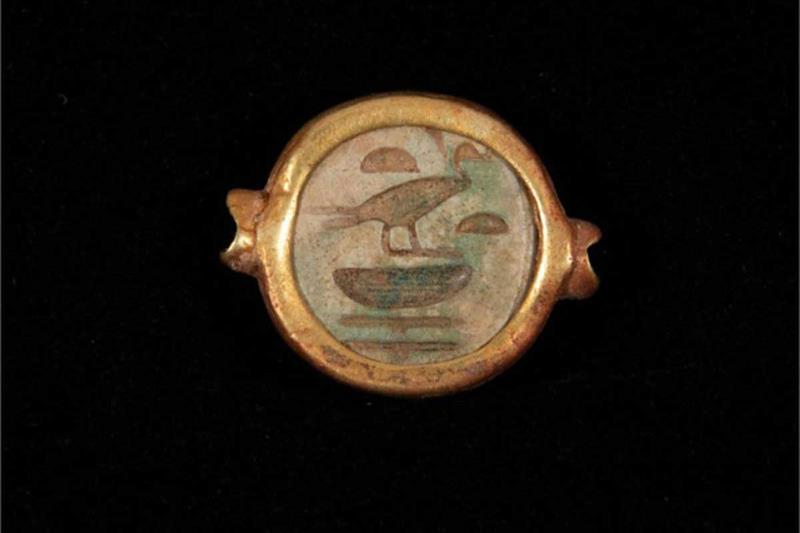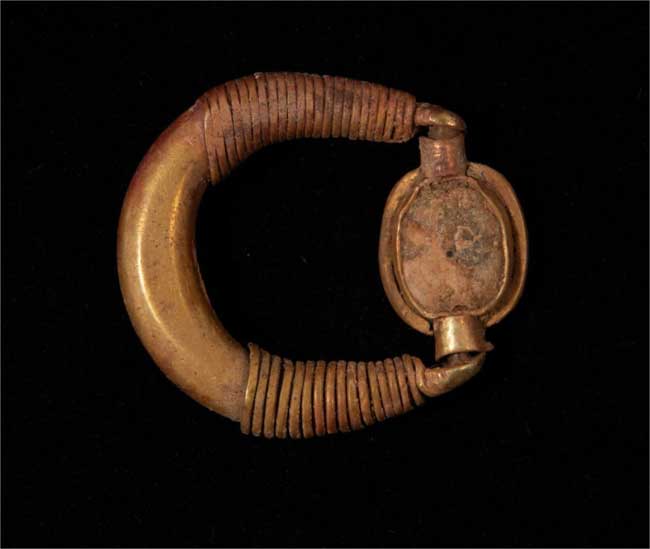In Photos: Gold & soapstone jewellery discovered in 18th Dynasty cemetery in Upper Egypt's Minya
Nevine El-Aref , Tuesday 13 Dec 2022
A British mission from Cambridge University working at Tell El-Amarna necropolis in Minya governorate in Upper Egypt discovered a small collection of gold and steatite (soapstone) jewellery in an 18th Dynasty (1550 to 1292 BC) cemetery.

Mostafa Waziri, secretary general of the Supreme Council of Antiquities, explained that the jewellery had originated from the interment of a young adult female, who was buried wearing a necklace of petal-shaped pendants and three finger rings.
She had been wrapped in textile and plant-fibre matting and interred in a small shaft-and-chamber tomb, along with several other individuals.
Ana Steven, deputy director of the mission said that her burial is located at the Amarna North Desert Cemetery in the low desert west of the North Tombs. It includes a small number of burial shafts and tombs, as well as pit graves.
The Amarna Project has been investigating the cemeteries of Amarna since 2005, with the aim of exploring life experiences and burial customs at the ancient city of Akhetaten.
The ancient Egyptian city of Amarna continues to transform our understanding of how human society has developed. Not only was it home to the monotheistic King Akhenaten, his wife Nefertiti and the young Tutankhamun, it remains one of the world's pre-eminent archaeological sites for understanding how people lived in the pre-Classical world.
The Cambridge University mission started excavations in Tel El-Amarna in 1977 at several sites including the grand Aten Temple, the Al-Ahgar village, the northern palace and the Re and Banehsi houses, according to Director-General of Antiquities in Middle Egypt Gamal El-Semestawi.
The mission has also carried out restoration works at the Small Atun Temple and the northern palace.
Tel El-Amarna, which lies around 12 kilometres southwest of Minya city, holds the ruins of the city constructed by King Akhenaten and his wife Queen Nefertiti to be the home of the cult of the sun god Aten.
The ruins of this great city include magnificent temples, palaces and tombs.



-- Sent from my Linux system.
No comments:
Post a Comment